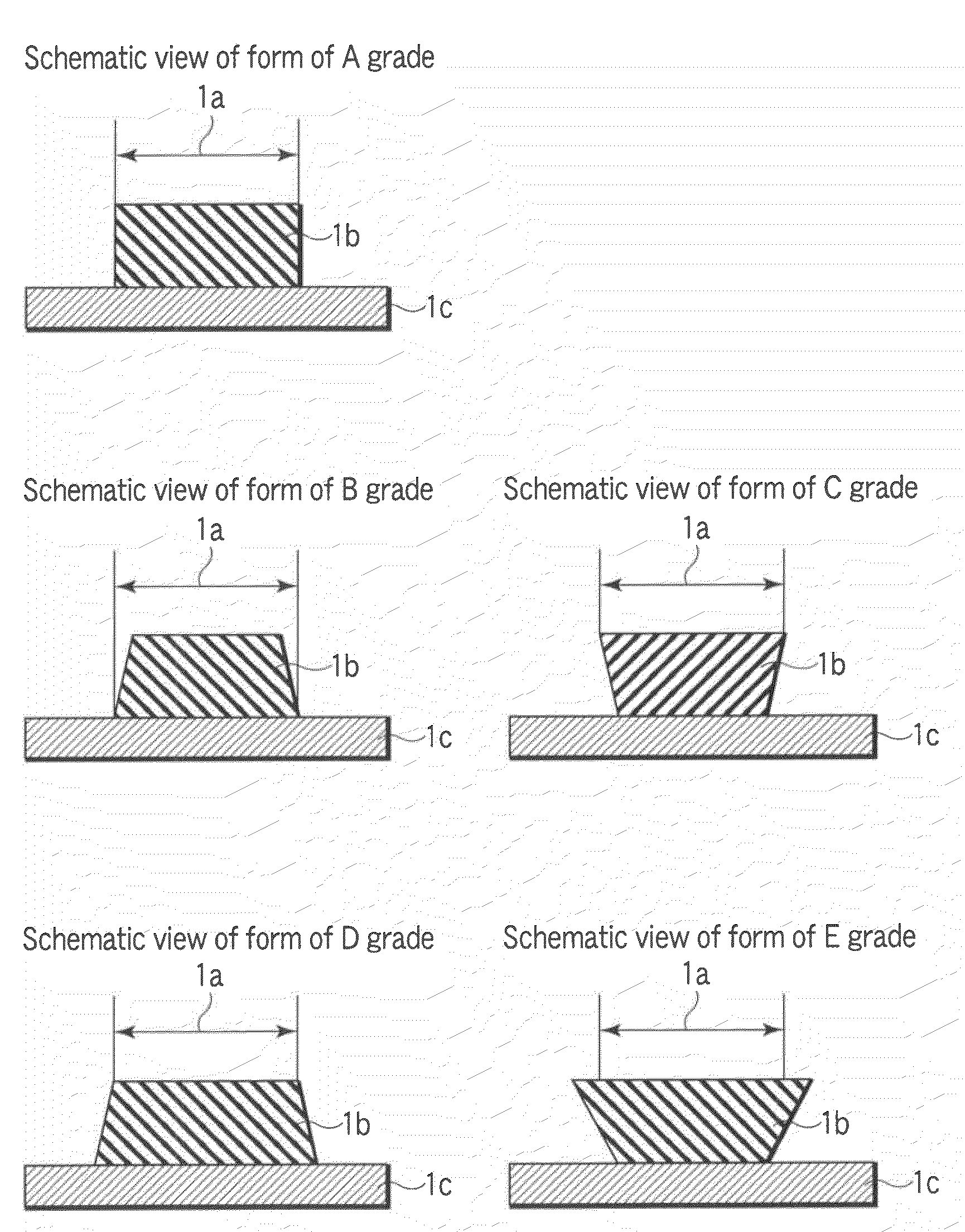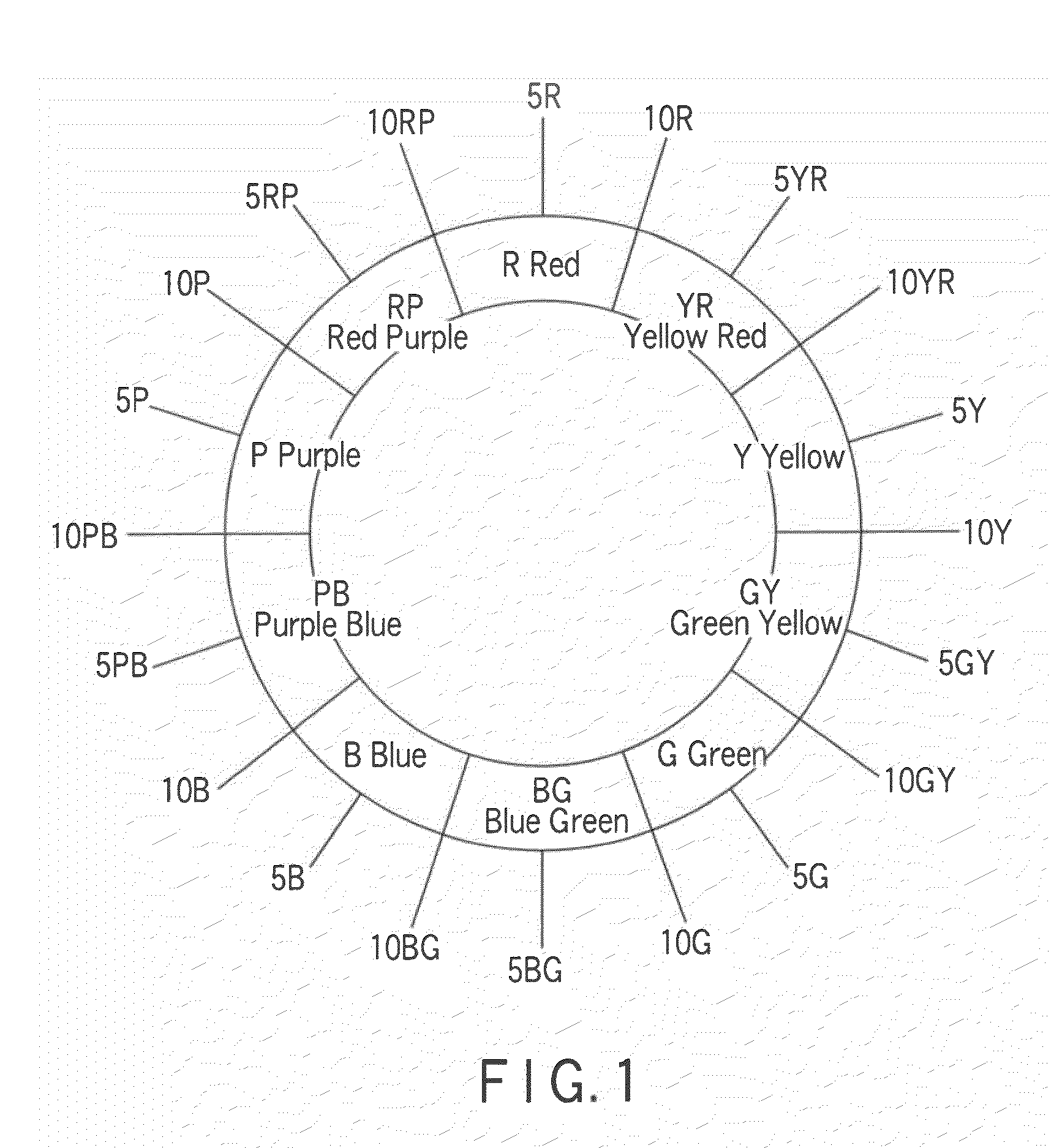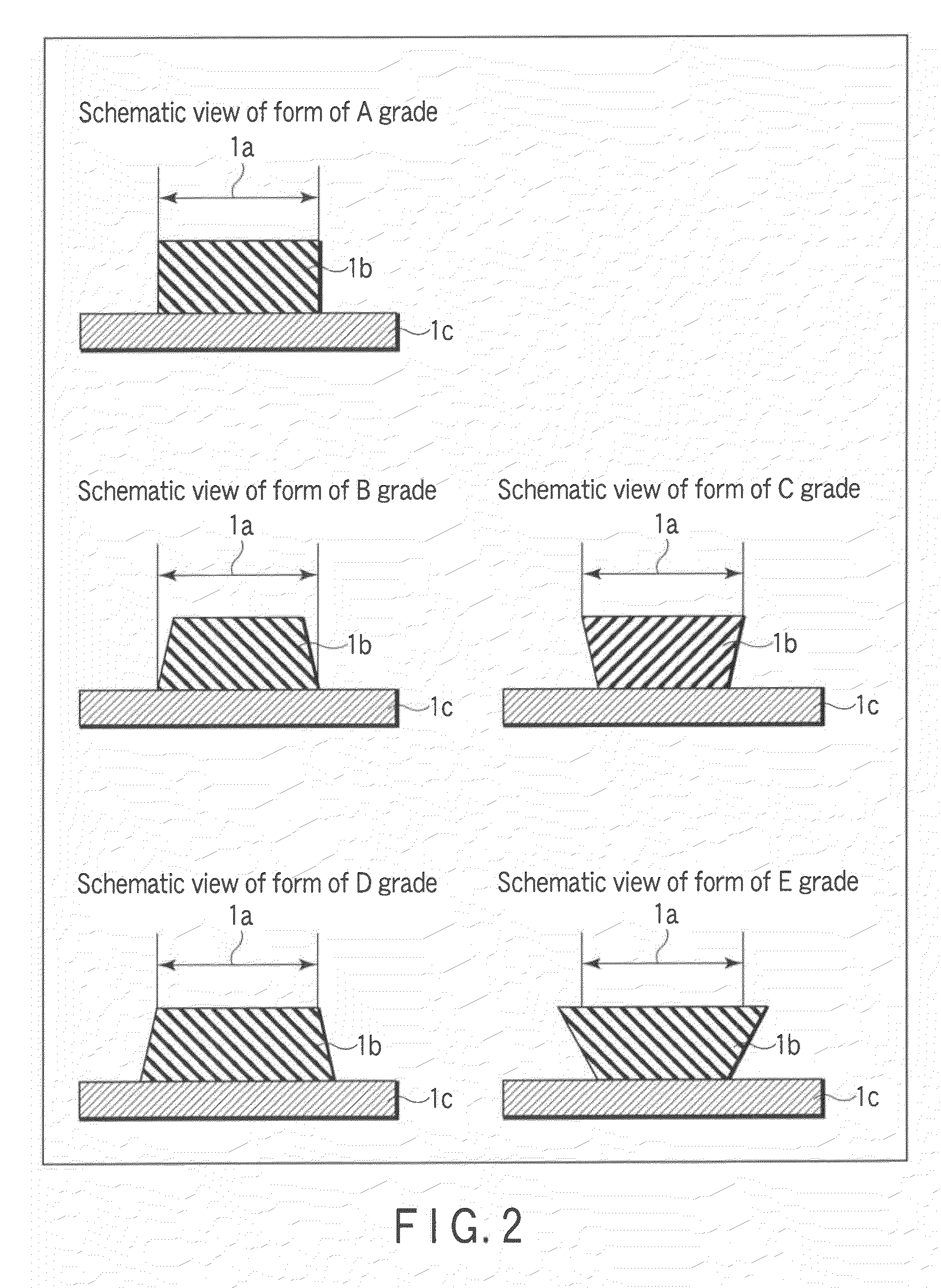Photocurable resin composition, dry film, cured product, and printed circuit board
a technology of resin composition and resin film, applied in the direction of photosensitive materials, instruments, photomechanical equipment, etc., can solve the problems of failure of exposure at high sensitivity, difficulty in deep curing, and difficulty in developing solder resists giving equal resolution performance for different ultraviolet exposure devices, etc., to achieve good dry tack, high sensitivity, and sufficient color
- Summary
- Abstract
- Description
- Claims
- Application Information
AI Technical Summary
Benefits of technology
Problems solved by technology
Method used
Image
Examples
example 1
Resin Composition Example 1
[0138]A 2-L separable flask equipped with a stirrer, a thermometer, a reflux condenser, a dropping funnel and a nitrogen inlet tube was charged with 660 g of a cresol novolac type epoxy resin (EOCN-104S, softening point 92° C., epoxy equivalent=220, manufactured by Nippon Kayaku Co., Ltd.), 421.3 g of carbitol acetate, and 180.6 g of solvent naphtha, and the mixture was heated and dissolved at 90° C. under stirring. Subsequently, the resulting solution was cooled once to 60° C., then 216 g of acrylic acid, 4.0 g of triphenyl phosphine, and 1.3 g of methyl hydroquinone were added thereto, and the mixture was allowed to react at 100° C. for 12 hours, whereby a reaction product having an acid value of 0.2 mgKOH / g was obtained. 241.7 g of tetrahydrophthalic anhydride was added to the product, and then allowed to react for 6 hours under heating at 90° C. As a result of this, a solution of the carboxylic acid-containing resin (A) having an acid value of 50 mgKOH...
examples
[0165]Photosensitive resin compositions prepared with the same recipe for Examples 16 and 23 were diluted with methyl ethyl ketone, applied to carrier films, and dried through heating thereby forming photosensitive resin composition layers having a thickness of 20 μm. The layers were dried for 30 minutes with a heat drier at 80° C. A cover film was bonded to each layer to produce a dry film. Thereafter, the cover film was removed, the film was thermally laminated to a copper foil substrate having a pattern, and then exposed to light in the same manner as described above. After the exposure, the carrier film was removed, the composition layer was thermally cured for 60 minutes with a hot-air drier at 150° C., whereby a test substrate was made. The resultant test substrates having a cured film were subjected to characteristic evaluation by the below-described test methods and evaluation methods. The results are equivalent to those for Examples 16 and 23.
PUM
| Property | Measurement | Unit |
|---|---|---|
| thickness | aaaaa | aaaaa |
| acid value | aaaaa | aaaaa |
| acid value | aaaaa | aaaaa |
Abstract
Description
Claims
Application Information
 Login to View More
Login to View More - R&D
- Intellectual Property
- Life Sciences
- Materials
- Tech Scout
- Unparalleled Data Quality
- Higher Quality Content
- 60% Fewer Hallucinations
Browse by: Latest US Patents, China's latest patents, Technical Efficacy Thesaurus, Application Domain, Technology Topic, Popular Technical Reports.
© 2025 PatSnap. All rights reserved.Legal|Privacy policy|Modern Slavery Act Transparency Statement|Sitemap|About US| Contact US: help@patsnap.com



